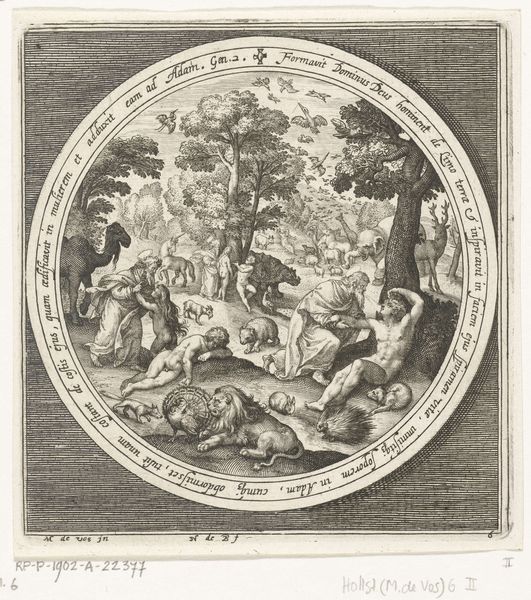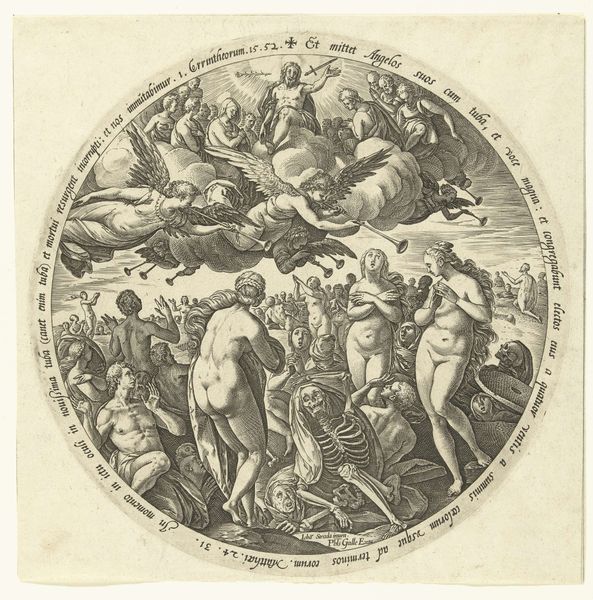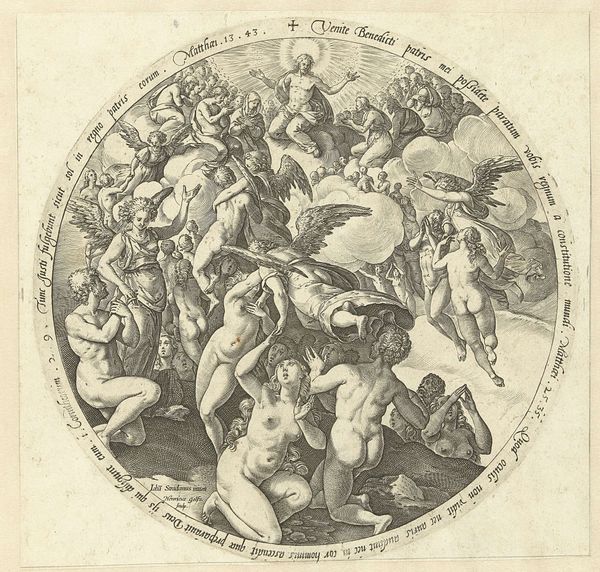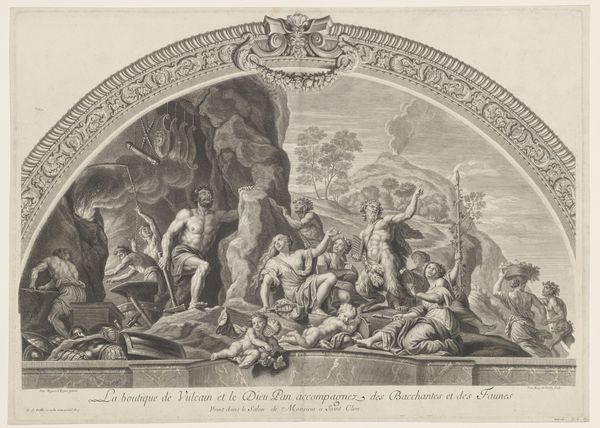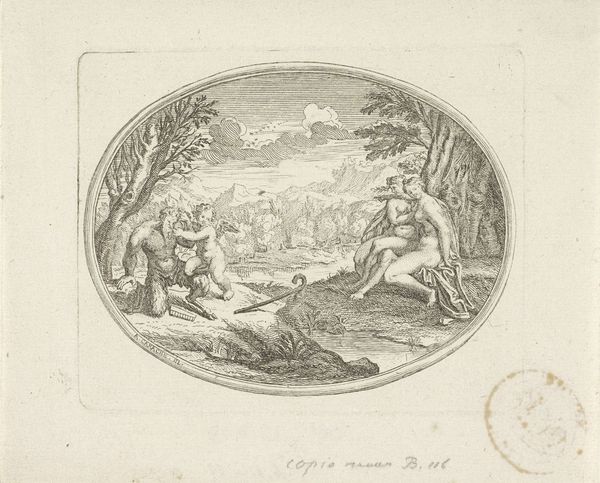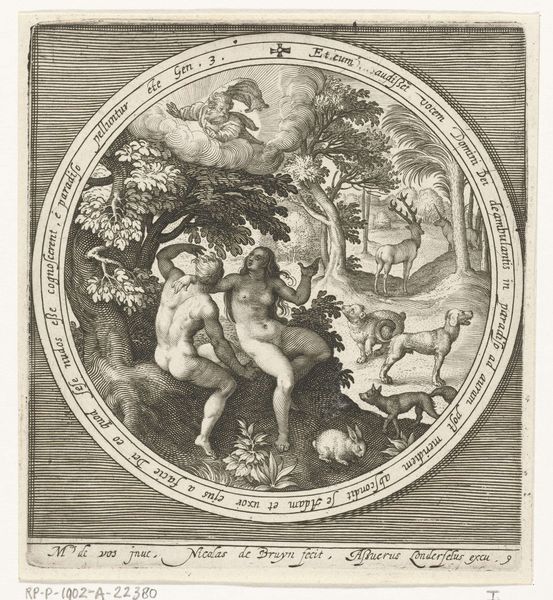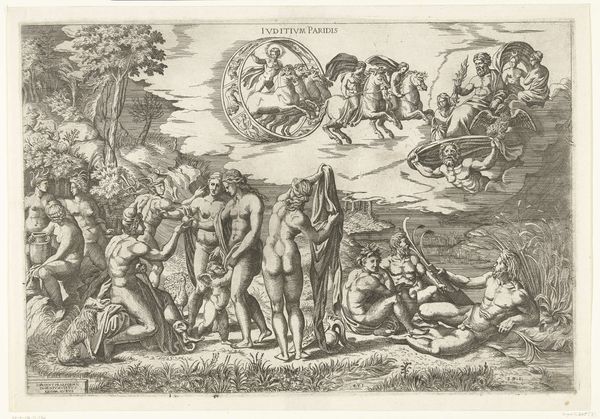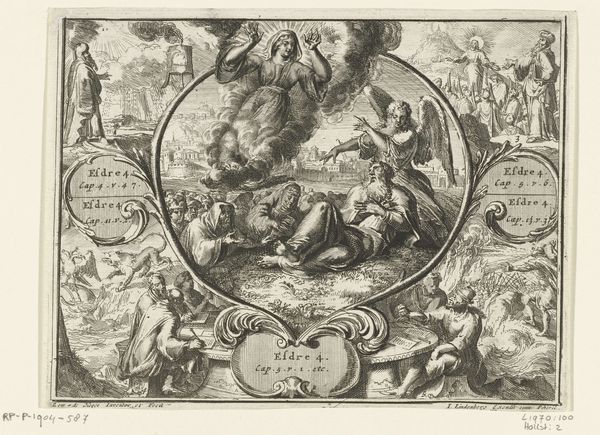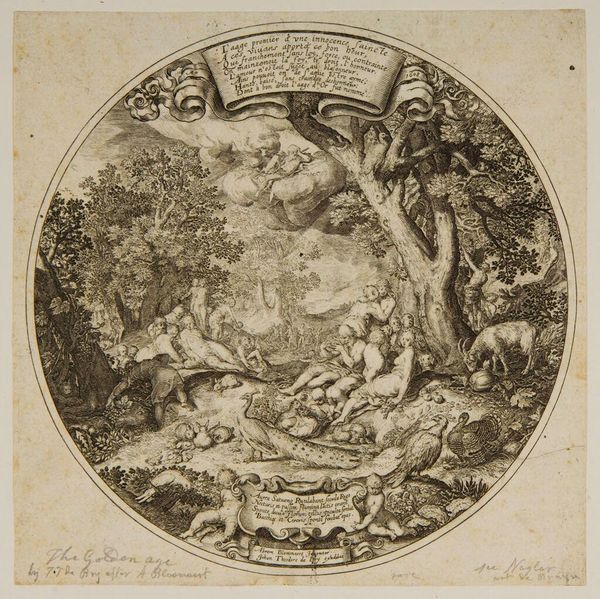
print, engraving
#
allegory
#
baroque
#
pen drawing
# print
#
figuration
#
line
#
history-painting
#
nude
#
engraving
Copyright: Rijks Museum: Open Domain
Editor: So, here we have Zacharias Dolendo’s "The Rape of Europa" from around 1592. It's a print, an engraving, swirling with figures. I’m immediately struck by how, despite the serious subject matter, it feels…almost celebratory? What do you see in this piece, particularly in relation to the power dynamics at play? Curator: That celebratory feel is interesting. I see the historical context as paramount here. "Rape" in the title doesn’t simply refer to sexual assault as we understand it today. It's about abduction, appropriation, the seizure of something, or someone. Looking at Europa’s posture and expression, it is more suggestive of compliance, complicity almost, and that speaks volumes. What power structures are being implicitly endorsed here? Editor: That’s fascinating. So you’re saying it’s not just about a god taking a mortal, but about broader societal structures condoning that act? Curator: Precisely. The depiction normalizes male dominance, even divine entitlement. The other figures watching in the background also speak to complicity, voyeurism almost, acting as witnesses but not actively intervening. They create an uncomfortable tension, wouldn’t you agree? Editor: Definitely. The composition, the figures gazing from a distance... It adds to the sense that this act is somehow sanctioned. It does feel uncomfortable when you view it with modern ideas about consent. Are there any philosophers, theorists or texts, who have challenged our interpretations of these types of images? Curator: Many. Feminist art historians like Linda Nochlin have interrogated the pervasive presence of the female nude in art history, challenging the male gaze inherent in its creation and reception. Also, postcolonial scholars could delve into how such images reinforce Western narratives of dominance over other cultures, figured here by Europa. The very act of "taking" her establishes a power dynamic. Editor: This really shifts my perspective. I initially focused on the visual drama but now I see how deeply ingrained cultural assumptions are encoded within the artwork itself. Curator: Exactly. Art reflects and perpetuates societal norms, and by examining pieces like this critically, we can expose those often-unacknowledged power dynamics. It's about moving beyond the surface and recognizing the ideologies at play.
Comments
No comments
Be the first to comment and join the conversation on the ultimate creative platform.
